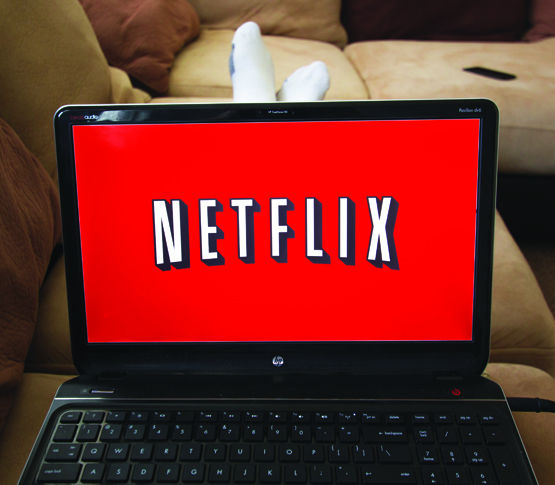Welcome Back: Streaming is the new black: TV binging on campus

August 19, 2014
The binge-watching bandwagon is taking everyone along for a ride to enjoy the newest way to watch television.
From Pitt students to cable companies, many are taking full advantage of one of the 21st century’s grandest achievements to date: Internet streaming. Now, instead of watching a new episode of a show at 8 p.m. every Sunday night in their living room on TV, consumers have the option of watching shows at any time and pretty much anywhere.
A great majority can choose to watch shows on any mobile device as well, thanks to Internet streaming services such as Netflix, Hulu and On-Demand services from cable companies. More often than not, consumers can even watch multiple episodes of a show in immediate succession, a process commonly called binge-watching.
Kyle Bauer, a sophomore engineering major, is very familiar with watching multiple episodes of a television show in a row. He’s watched Fox’s “Prison Break” and Showtime’s “Dexter” on binges and usually spends anywhere from six to 10 hours a week watching TV shows.
“It’s easy to binge when Netflix pressures you with ‘THE NEXT EPISODE STARTS IN 10 SECONDS’ thing,” Bauer said in an e-mail. “I think college students as a whole would get significantly more sleep if Netflix did not exist.”
Matt Snyder is a sophomore computer engineering major with a similar habit — he binge-watches anime shows such as “Sword Art Online.” During the school year, he said he watches no more than 10 hours of television in a week, but in the summer might watch more than 30 hours per week.
Snyder said that one benefit of binge-watching is that “you don’t get confused or forget things.” This has a lot to do with the lack of wait time between episodes, which Bauer said was something he saw as a benefit to binge-watching. The two students are not alone in their habit, either.
According to Pitt spokesman John Fedele, a survey of roughly 2,000 Pitt students conducted by Pitt’s housing office found that nearly 88 percent of students stream video online. While about 24 percent consume streaming video for at least 11 hours each week, 71 percent are more than likely using Netflix as their streaming service.
Netflix is not the only medium to binge-watch television shows — cable companies are getting in on the fun as well. Comcast’s cable service, Xfinity, offers over 80,000 options for streaming between its On-Demand service and its Xfinity On-Demand app for mobile, according to Comcast spokesman Bob Grove.
“We’ve been celebrating binge-watching for a couple years,” Grove said.
Grove highlighted Comcast’s annual week-long “Watchathon” held every spring, in which customers can enjoy premium channels like Starz and On-Demand even if they ordinarily don’t receive access to them. This past year’s “Watchathon,” according to Grove, “broke all records” and “drove interest” for shows such as HBO’s “Game of Thrones” and Fox’s “The Mindy Project.”
Even though it’s everywhere, there are some people who haven’t caught the binge-watching bug yet, and Jim Pagels, a freelance writer and editor at Dallas Morning News SportsDay, is one of them. Pagels wrote an article for Slate in 2012 titled “Stop Binge-Watching TV,” where he argued for watching television shows one episode at a time, with breaks of a minimum of one day between each episode.
Even though he might disagree with the binge-watching method, Pagels likes streaming services — he said that having the services “makes movies and TV more accessible and affordable for more people.” Pagels also said that the binge-watching trend will eventually reverse itself.
“My opinion is that the increased discussion around shows will actually swing this binging trend back the other way to some extent as more people will find enjoyment about being at the same place as their friends,” Pagels said in an email. “In fact, much of the reason people binge on shows is simply to catch up to the week-to-week viewing of a currently airing season so that they too can participate in this conversation.”
Pagels’ opinion carries some weight, too. Grove said that “55 percent of binge watchers told us they want to see current season content,” citing a Harris poll that Comcast sponsored. Even avid binge-watchers have a bone to pick with the method too.
“It’s not really healthy sitting around all day,” Snyder said.
Bauer had issues with binge-watching being “addictingly convenient,” which could get in the way of exercise time. Thankfully, Pitt is equipped to handle the addictive side of binge-watching television shows too. Tev Zukor, the director of the University Counseling Center, said that the Center is equipped to handle Internet and television addiction.
Though there are downsides, Pagels said that eventually people will only binge-watch to catch up to current season content so that they can join in on the TV conversation.
“I can almost guarantee that I’ll be watching shows like this later in life,” Bauer said. “I believe online streaming is the future of television-like entertainment.”







